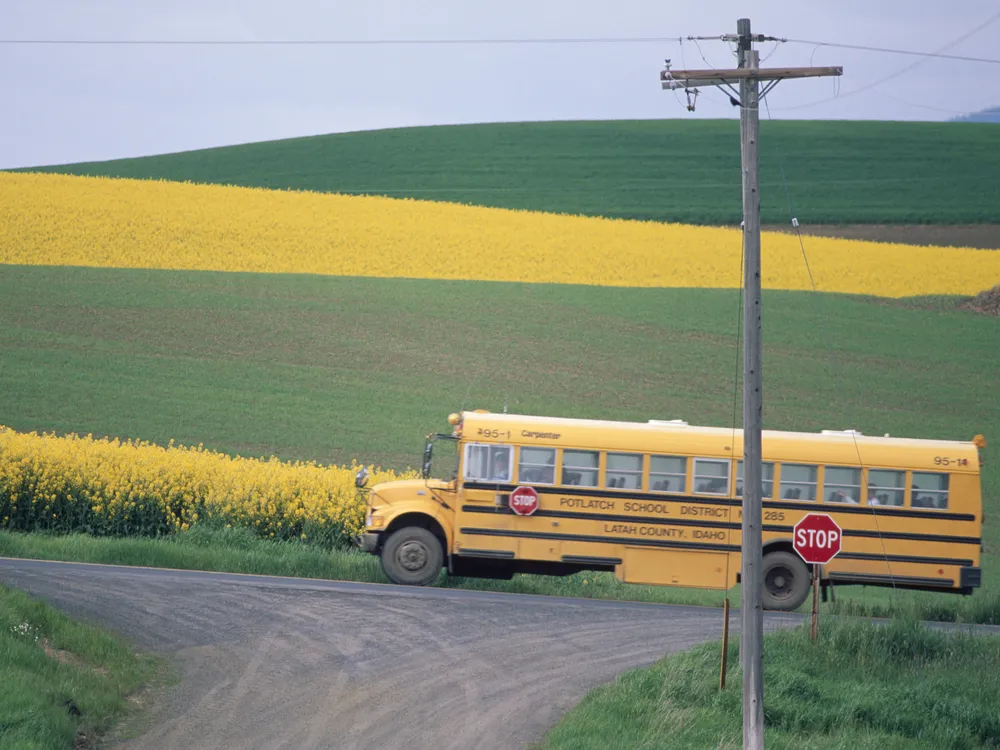When Do Kids Go Back to School? It Depends on Where They Live
In some districts, students returned to their classrooms weeks before Labor Day

Retailers are promoting back-to-school deals as children prepare to return to the classroom. But while some students may just be starting to shop for notebooks and pencils, others have already been hitting the books for weeks.
The typical American school year consists of 180 days spread over ten months, with a break during the summer. However, school start dates vary widely across the country, ranging from mid-July to the first week of September, according to an analysis by the Pew Research Center.
Pew analyzed the calendars for the 2023-24 school year at more than 1,500 American school districts. The analysis found substantial regional variation in school start dates, with southern schools tending to start earlier than northern ones.
In New England, for example, just 1 percent of students started school before August 28. Similarly, in the Middle Atlantic (New Jersey, New York and Pennsylvania), 76 percent of students went back to the classroom after Labor Day.
Meanwhile, in the West South Central region (Texas, Oklahoma, Arkansas and Louisiana), 94 percent of students headed back to class during the middle of August.
In the East South Central region (Alabama, Kentucky, Mississippi and Tennessee), 69 percent of students went back to school between August 7 and 11. Another 19 percent from that region started earlier, between July 17 and August 4.
In other parts of the country (including many western states), start times are more evenly split among the weeks between late July and early September.
Why so much regional variation? State laws play a role in some cases: More than a dozen states require classes to start within a specific window. Minnesota schools, for instance, are required to start after Labor Day (though schools can apply for waivers). For more than 30 years, Virginia had a similar requirement known as the “King’s Dominion Law” (named after the local amusement park) to boost the state’s economy.
Weather likely also plays a role. As climate change causes global temperatures to rise, school start dates may end up varying even more. If schools don’t have air conditioning, for example, they may need to start later once temperatures have cooled off. (Other options might include online learning or earlier dismissal times.)
“It’s very clear that temperatures even as low as the mid-80s start to impair cognitive functioning,” Joshua Graff Zivin, an economist at the University of California, San Diego, told the Weather Channel’s Jimmy He last year. “In the moment, or within an hour of exposure to that temperature, people start to perform worse on both verbal and mathematical reasoning tests.”
Summer break is a relatively new phenomenon. Today’s school calendar is not, as many have been told, rooted in the nation’s agrarian past. In the early 1800s, many rural schools operated in the summer and winter, which gave children time to help plant crops in the spring and harvest them in the fall.
“If you think about farming needs, that’s actually what makes sense,” Kenneth Gold, a historian at the College of Staten Island, told PBS News’ Saskia de Melker and Sam Weber in 2014.
Meanwhile, urban schools were often open year-round. Attendance was not mandatory, and students usually didn’t actually go to school for the entire year. As PBS News writes, “Children came when they could.”
The school calendar as we know it today became the standard between 1880 and 1920, according to Pew. City-dwelling families began vacationing at beaches or in the mountains to escape the summer heat.
“You begin to have kind of a movement away from the summer because people aren’t around,” Gold told CBS News’ Aliza Chasan earlier this year.
Today, some school districts are shortening their summer hiatuses and building in longer breaks throughout the year to help prevent the “summer slide,” the sometimes disputed idea that students lose newly developed skills during the long break.
Still, most schools adhere to traditional calendars. While start times vary across the country, many districts have been following the same schedule for years.
“It’s honestly surprising to me that the school calendar remains generally untouched,” Michael Capuana, a district superintendent in Buffalo, New York, told USA Today’s Mary Walrath-Holdridge last year. “This school calendar has been in place for decades in New York. In many ways, it seems as though the rationale boils down to ‘we’ve always done it this way.’”

